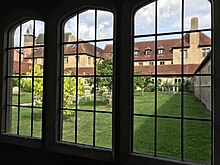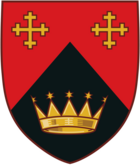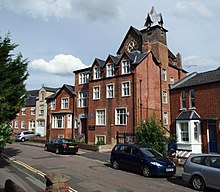
Wycliffe Hall is a Church of England theological college and a permanent private hall of the University of Oxford in the United Kingdom. It is named after the Bible translator and reformer John Wycliffe, who was master of Balliol College, Oxford in the 14th century.

St John's College is a college of the University of Durham, United Kingdom. It is one of only two "recognised colleges" of the university, the other being St Chad's. This means that it is financially and constitutionally independent of the university and has a greater degree of administrative independence than the other, "maintained", colleges. However, to maintain its status as a recognised college, the university council must approve the appointment of its principal and be notified of changes to its constitution.
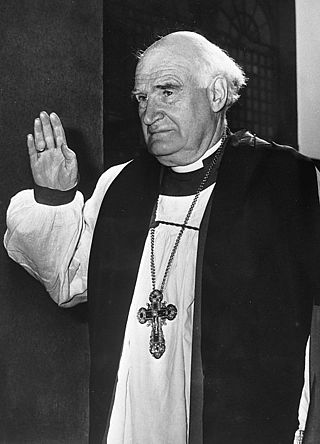
Arthur Michael Ramsey, Baron Ramsey of Canterbury, was a British Church of England bishop and life peer. He served as the 100th Archbishop of Canterbury. He was appointed on 31 May 1961 and held the office until 1974, having previously been appointed Bishop of Durham in 1952 and the Archbishop of York in 1956.
Moore Theological College, otherwise known simply as Moore College, is the theological training seminary of the Diocese of Sydney in the Anglican Church of Australia. The president of the Moore Theological College Council is ex officio the Anglican Archbishop of Sydney.

Edward King was a British Anglican bishop and academic. From 1885 to 1910, he served as Bishop of Lincoln in the Church of England. Before his consecration to the episcopate, he was Principal of Cuddesdon College (1863–1873), an Anglo-Catholic theological college, and then Regius Professor of Pastoral Theology at the University of Oxford (1873–1885).

Huron University College is a university college affiliated with the University of Western Ontario in London, Ontario, Canada. It was Incorporated on the 5 May 1863. Huron is the founding institution of the University of Western Ontario.

Wycliffe College is an evangelical graduate school of theology at the University of Toronto. Founded in 1877 as an evangelical seminary in the Anglican tradition, Wycliffe College today attracts students from many Christian denominations from around the world. As a founding member of the Toronto School of Theology, students can avail themselves of the wide range of courses from Canada's largest ecumenical consortium. Wycliffe College trains those pursuing ministry in the church and in the world, as well as those preparing for academic careers of scholarship and teaching.

The College of St John the Evangelist or St John's Theological College, is the residential theological college of the Anglican Church in Aotearoa, New Zealand and Polynesia.
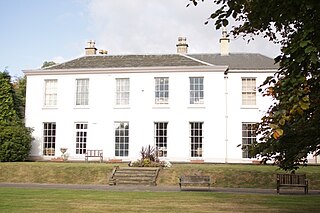
St John's College, Nottingham, founded as the London College of Divinity, was an Anglican and interdenominational theological college situated in Bramcote, Nottingham, England. The college stood in the open evangelical tradition and stated that its mission was "to inspire creative Christian learning marked by evangelical conviction, theological excellence and Spirit-filled life, that all who train with us might be equipped for mission in a world of change".

Ripon College Cuddesdon (RCC) is a Church of England theological college in Cuddesdon, a village 5.5 miles (8.9 km) outside Oxford, England. The College trains men and women for ministry in the Church of England: stipendiary, non-stipendiary, local ordained and lay ministry, through a wide range of flexible full-time and part-time programmes.
Thomas Garner was one of the leading English Gothic revival architects of the Victorian era. He is known for his almost 30-year partnership with architect George Frederick Bodley.
Stephen Whitefield Sykes was a Church of England bishop and academic specialising in divinity. He was Van Mildert Professor of Divinity at Durham University from 1974 to 1985, and Regius Professor of Divinity at Cambridge University from 1985 to 1990. Between from 1990 and 1999, he served as the Bishop of Ely, the diocesan bishop of the Diocese of Ely. He was the Principal of St John's College, Durham from 1999 to 2006. He served as an Honorary Assistant Bishop in the Diocese of Durham during his time as head of St John's College and in retirement.
The Society of St John the Evangelist (SSJE) is an Anglican religious order for men. The members live under a rule of life and, at profession, make monastic vows of poverty, celibacy and obedience.

Westcott House is an Anglican theological college based on Jesus Lane in the centre of the university city of Cambridge in the United Kingdom. Its main activity is training people for ordained ministry in the Church of England and other Anglican churches. Westcott House is a founding member of the Cambridge Theological Federation. The college is considered by many to be Liberal Catholic in its tradition, but it accepts ordinands from a range of traditions in the Church of England.

St Padarn's Institute came into being in 2016. Until then the site belonged to St Michael's College, an Anglican theological college in Llandaff, Wales. St Michael's college was founded in Aberdare in 1892, and was situated in Llandaff from 1907 until 2016. Among its many alumni was the poet R. S. Thomas. The original building on the site was a house constructed for himself by John Prichard. After his death, that building was incorporated into the newly founded St Michael's College, which was built mainly to the designs of F. R. Kempson between 1905 and 1907. In the late 1950s, a chapel was built by George Pace. The college had significant financial problems in the early 21st century and was eventually closed.

Chichester Theological College (1838–1994) was an Anglican theological college for the Diocese of Chichester in Sussex, England. Its churchmanship was high church and Anglo-Catholic.
The College of the Transfiguration in Makhanda, Eastern Cape, is the only provincial residential college of the Anglican Church of Southern Africa, offering a contextual approach to theology studies.
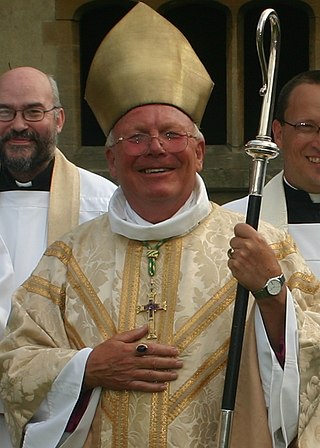
Edwin Ronald Barnes was a British Roman Catholic priest and a former Church of England bishop. He was the Anglican Bishop of Richborough from 1995 to 2001 and was also formerly the president of the Church Union.

St John the Evangelist Church is a non-parochial church on Iffley Road in Oxford, England. It was built as the community church of the mother house of the Anglican religious order known as the Society of St. John the Evangelist. Since 1980 it has served also as one of the college chapels of St Stephen's House, Oxford.

St Aidan’s College was a Church of England theological college in Birkenhead, Cheshire, England, open from 1847 to 1970.
